


Verdun, 1916. The first real air battle in history rages in the skies over Verdun. France’s Nieuport pursuit planes are equipped with an impressive new propeller that is simple, rugged, effective and even beautiful. It’s called the Éclair (“Lightning”), and it was designed by Marcel Bloch, barely 24 years old. The following year, with some 40 propeller manufacturers in France turning out 253 different models, the government selected only the three best, including the Éclair, which would be used, for example, on the Spad VII flown by French ace Georges Guynemer.
This commercial breakthrough marked the start of one of the most striking success stories in the international aviation industry.
‘‘ During recreation period one day in the courtyard of the school, I saw an airplane go by for the first time. It was a Wilbur Wright plane owned by the count of lambert, and it was circling the Eiffel tower. […] I had never seen an airplane, but right then I understood that aviation had entered my mind and my heart.’’
Marcel Bloch was born on January 22, 1892 in Paris, and quickly became fascinated by the daring feats of the pioneering aviators. In 1913, he earned a degree in aeronautical engineering from the École supérieure d’aéronautique.
Called up for his military service, he was assigned to the aeronautics laboratory in Chalais-Meudon, near Paris.
Shortly after the start of World War I, Marcel Bloch and Henry Potez were chosen to oversee the manufacture of Caudron G-3 reconnaissance planes, with production duties split between several well-known manufacturers.
It was at this point that Bloch designed the new Éclair propeller, and had it manufactured by carpenters in Paris. His first experience as manufacturer familiarized him with the wide variety of production issues, and above all gave him vital data about a broad range of airplanes, since manufacturers sent him all the associated technical specifications.
At that point, Marcel Bloch decided to become an aircraft manufacturer himself, in association with his friends Henry Potez and Louis Coroller.
They founded the Société d’Études Aéronautiques (SEA) on July 1, 1917, offering their SEA IV twin-seat pursuit and reconnaissance airplane.
The French army ordered 1,000 of these planes in late 1917, but with the war ending just after production startup, only 115 were built. Marcel Bloch therefore shifted his focus to real estate and furniture manufacture while waiting for brighter days.
‘‘The war we had won at such a high cost in human lives was regarded by everyone then as "the war to end all wars" . The government services responsible for airplane production informed us that, if we wished, we could make doors, windows or wheelbarrows, but it would be a long time before any new orders for aircraft were given. And even if someday a government order were to be given, it would be for only a few airplanes, and it would go to the big companies with big factories and reserves of manpower, like Voisin, Breguet, Farman and others.’’
France created a Ministry of Aviation in 1928, kicking off a policy of developing prototypes to modernize the French military fleet. Marcel Bloch, his enthusiasm rekindled by Lindbergh’s flight across the Atlantic in 1927, was ready to return to his first love, aviation.
Monsieur Bloch founded his own design office in 1929 and submitted a proposal to the ministry for the construction of a trimotor plane with all-metal construction – an innovative technique at the time – to carry the mail.
This aircraft would not enter production, but the French army still needed a three-engine plane to reach the country’s colonies, so they ordered a modified version: the MB-120.
The main planes that followed included the single-engine MB-81, designed for the transport of wounded soldiers, and ordered in 1931; prototypes of light planes; and the twin-engine warplanes MB-200 (1933), MB-210 (1934) and MB-131 (1936).
Marcel Bloch also began the construction of airliners, including the twin-engine MB-220 (1936) and the four-engine MB-160 (1939), later the Languedoc, flown by Air France.
In just a few short years he had become the country’s second leading aircraft manufacturer.
Bloch’s success in the combat aircraft sector was especially striking. A total of 750 MB-151, MB-152 and MB-155 fighters were produced.
His company also made a light bomber and a twin-engine ground attack plane, the MB-174 and MB-175, respectively. A total of 1,000 were ordered, but the rapid outcome of the war in France limited deliveries.
The production of these different models was distributed among several manufacturers, under license, to give them sufficient workload. The MB-200, MB-210 and MB-152 were exported.
A total of about 1,800 Bloch civil and military aircraft were built before the Second World War.
‘‘You were offering us a beautifully designed airplane, of all-metal construction, and you precisely and efficiently assessed all of its characteristics. You yourself determined, like I still do today, all aspects of its production, which seemed to me emblematic of eminent manufacturer with a great future in aviation.’’
As early as 1930, Marcel Bloch had begun to form an outstanding team of young engineers, wholly devoted to the charismatic patron.
Concerned about his workers’ wellbeing, Monsieur Bloch gave them a week of paid vacation starting in 1935. His “human resources” policy would always be ahead of that applied by his industry counterparts.
When the aviation industry was nationalized in 1936, Bloch’s factories became part of the new company, Société Nationale de Construction Aéronautique du Sud Ouest (SNCASO). He was named managing director of this company, a position he would hold until January 1940. At the same time, Bloch set up an independent design office to continue working on his own ideas.
In October 1940, Marcel Bloch was imprisoned by the Vichy government, and his goods were confiscated.
A fervent patriot who refused to work for the occupying force, he was deported to Buchenwald by the Nazis.
Although very ill, he managed to survive until the liberation of this concentration camp in April 1945, thanks to help from a clandestine communist organization.
Throughout this extremely trying period, Marcel Bloch, who was convinced the Allies would eventually win, never stopped designing his planes.
He had a single goal in mind: to resume production after the war.
‘‘Imprisoned at fort Montluc in 1944, Marcel Bloch seemed as inapt as possible to stand up to this particularly harsh prison, where many people died. But he was a reed with a backbone of steel, tough, flexible and of an exceptional caliber. […] He was phlegmatic, impassive, calm, and throughout the day he would repeat: ‘When things get tough, be strong,’… and he was strong. That was his manner. He was impossible to perturb, and he had a logical optimism, because he really thought that the Germans would lose the war.’’
From 1945 to 1975, Dassault’s design office, prototype shop and assembly lines worked without letup. The company produced some 20 different types of aircraft, not to mention numerous derivatives and prototypes that never entered production.
Dassault tested many different solutions, and was in fact the only company in the world to have developed so many different prototypes.
Dassault’s pragmatic technical approach, a clever balance of audacity and realism, bore fruit.
Innovation was a constant, but applied on a proven basis: a new aircraft would use a proven power plant, for instance, while a new engine would be fitted to an airframe with well-known characteristics.
This method resulted in the creation of different aircraft families, with long production runs.
Marcel Dassault carved out a strong position in military aviation, starting with the Ouragan and Mystère fighters, then the legendary Mirage family.
‘‘I named my mirage III plane ‘mirage’ because of the plane’s qualities of attack and evasion, its ability to escape enemy thrusts most of the time. The mirage is as invulnerable to an enemy’s blows as the desert mirage is elusive to the desert traveler.’’
Applying the company’s long-standing dual production policy, Dassault re-entered the civil aviation market in the burgeoning business jet segment.
The Falcon family would signal his grand return to the civil market, with the development of a complete range of “bizjets” following the impressive initial success of the Falcon 20, chosen by Charles Lindbergh for Pan Am.
‘‘I think the ‘Mystère 20’ has extraordinarily fine lines. From the standpoint of appearance, it would do credit to the Pan American insignia. I was tremendously impressed by it during the short time I was at the factory. I was also impressed by the factory in general, and by the men I met there. It was, possibly, the best french establishment of this kind I have ever seen.’’
Dassault was a pioneer in the use of the latest electronic systems in its aircraft, especially radar.
The company also expanded its scope of business in the post-war years. Increasing aircraft speed meant that manual flight had become too hard for pilots, who now needed hydraulic power assistance. Marcel Dassault decided that his company would have to design and build its own flight controls, which would play a key role in the success of the following models.
The first fly-by-wire controls appeared on the Mirage IV in 1959.
Dassault’s understanding and application of this technology, highly envied by its competitors, became one of the symbols of the company’s outstanding technical capabilities.
Dassault also carried out constant R&D and testing on new materials to reduce weight while maintaining or enhancing strength.
As early as 1970, Dassault began to invest in computer-aided design (CAD). This was a visionary approach. By developing software for three-dimensional design, Dassault was already imagining production directly from drawings.
Several state-of-the-art aircraft were built as prototypes, but did not enter production, such as the vertical-takeoff Mirage III V, or the variable geometry Mirage G. But the knowledge acquired through these efforts would later be incorporated in aircraft that did indeed go into production.
Dassault bravely funded several combat aircraft projects on its own, such as the Mirage III and the Mirage F1, designed and built in partnership with engine and equipment manufacturers. Once all design risks had been removed, the French government made its investment.
Dassault won virtually all French government contracts for combat aircraft, largely because of the technical quality and competitive pricing of its aircraft. Orders flowing in also helped generate work for both the state-owned prime contractors and private subcontractors.
From that moment on, Dassault played a pivotal role in the French aircraft industry. Furthermore, it led an entire ecosystem of high-tech companies, including Snecma, Thomson-CSF, Matra, etc.
‘‘I wasn’t really bothered by the heated debate on the civil/military production work split. For me, the most pressing concern was to encourage specialization, or to merge the state-owned planemakers to get the sector in shape.
The warplanes made by Dassault were so superior that the selection was only natural. Sud-Aviation had ambitious goals in this sector, but they had lost the habit, so we no longer gave them the chance to build fighters. If Marcel Dassault won these orders, it’s because he was the best.’’
When General Charles de Gaulle was named head of the government in 1958, he applied a policy of national independence. Dassault’s warplanes became one of the tools in his foreign policy. At the time, the buzzword was “Mirage diplomacy”.
The Mirage IV nuclear bomber was built by Dassault as prime contractor, leading a number of other companies, both private and state-owned. As the airborne component of France’s nuclear deterrent force, it ensured real strategic independence for France.
The Mirage III multirole fighter not only gave the French air force a state-of-the-art warplane, it was also offered to countries that did not want to depend solely on the United States or the Soviet Union.
Export sales became a vital part of Dassault’s business, outpacing its production for the domestic market and helping France’s balance of trade by generating income in foreign currencies. International sales, which extended aircraft production runs, enabled the French government to buy its own aircraft at more reasonable prices.
The benefits for the national economy were obvious, as explained by Benno-Claude Vallières: “Take the case of the Mirage III. The amount invested by the government to purchase this plane, plus production tooling, in relation to export revenues, comes to only 1.58%. In other words, for every 1.58 francs invested, France saw 100 francs in exports.”
From 1975 to 2000, fewer and fewer aircraft prototypes actually entered the test flight phase, with nearly all types of aircraft having already been tested.
It was no longer a question of test pilots “taking her out for a spin” to see what needed to be improved, as in the exploratory phase of the 1950s and 60s.
The digital revolution meant that engineers could design and test the optimum characteristics for each model well before the first flight.
Powerful new computer programs developed by Dassault enabled engineers to design aircraft structures right on their screens. At the same time, they could develop production orders for these parts, using new numerical control (NC) machine tools.
Their work marked the genesis of Dassault’s CATIA 3D design software and also the creation of Dassault Systèmes, under the impetus of Charles Edelstenne.
With the increasingly widespread use of light and strong composite materials, plus fly-by-wire flight controls, aircraft offered more and more performance and maneuverability.
The year 1986 would be pivotal in Dassault’s history. It saw the first flight of the technology demonstrator for the Rafale, a state-of-the-art fighter that would open exciting new perspectives. The Rafale was designed to replace seven different types of aircraft deployed by the French air force and navy.
The year 1986 also saw the death of Marcel Dassault and the departure of Benno-Claude Vallières, followed by the arrival of the new Chairman and CEO, Serge Dassault, who would take the reins of the company and lay foundations for the transition to the 21st century.
Subsequently, the fall of the Berlin Wall in 1989 marked the start of an upheaval in the international environment. The end of the East-West standoff led to cuts in defense budgets, while the downturn in the global economy discouraged new civil and military aircraft purchases. The drop in orders would eventually lead to a decrease in production.
Dassault Aviation nonetheless maintained its industrial capabilities and a state-of-the-art design department to cope with the crisis in the aviation industry under the best possible conditions.
The company also implemented a firm, but consensual restructuring policy so that the focus could shift from military aircraft to business aircraft when the market began to recover in the late 1990s.
Planes are like souls, they have wings and prolong life. Mine will still be flying when I am no longer here.
Dassault Aviation’s production policy integrated the complete product life cycle, from design to end of service life. This new approach to production reinforced Dassault Aviation’s skills as an industrial architect, while significantly reducing costs and enhancing quality.
Dassault is a long-standing expert in integrating the many complex systems that go into modern aircraft. Responsible for the overall design, as well as ensuring consistency and tracking all upgrades, Dassault guarantees the quality, reliability and flight safety of its aircraft, based on a proactive approach to continuous innovation.
Dassault Aviation draws on its corporate culture, anchored in a subtle balance between audacity and realism, plus technological excellence, to continuously strengthen its position as one of the highest performance aerospace companies in the world.
Mérignac, February 15, 2005. It’s a uniquely moving moment for the audience, who are wearing 3D glasses. They are flabbergasted by the realistic digital model of the Falcon 7X No. 1, which is being projected on an object in the shadows. As the virtual image fades to reveal the actual Falcon jet, many of them can’t believe their eyes – they’re still under the spell.
But when the ground crew pivots the aircraft to show its other side, the guests realize that they are really looking at the 7X. Many of them must be thinking, “We’re not in the 20th century any more!”.
Starting in 2000, Dassault Aviation launched a new industrial revolution to reduce the costly and time-consuming steps needed to make an aircraft, from design all the way to entry into service. The 21st-century revolution was built on the powerful computer systems and software developed by Dassault Systèmes, allowing the instantaneous exchange of design and production data between contributors located thousands of kilometers apart.
Design, production, support and customer relations data is all integrated in a single shared database, which is constantly updated throughout the life of the product.
At the same time, so-called “digital factories” enhance competitiveness by improving product quality and employee efficiency. Robots are widely used for routine, arduous and dangerous tasks. They also increase accuracy when machining primary parts, while facilitating work on complex parts by bolstering the technical skills of trade workers.
‘‘We, the French were […] pioneers in the industrial revolution. Throughout our history we have had men like Denis Papin, Clément Ader, Gustave Eiffel and Marcel Dassault, our great inventors and captains of industry, plus thousands of anonymous workers who wrote some of the most impressive pages in the history of France and created french industry.’’
Dassault Aviation has always leveraged its dual (civil-military) expertise, which is the foundation of its balanced business and an integral part of its DNA. The complementary nature of civil and military markets is a very effective bulwark against fluctuating political and economic conditions.
A single design department and the same plants produce Dassault’s military aircraft (Rafale and drones) and business aircraft (the Falcon family).
Sophisticated technologies developed for defense applications are subsequently applied to the civil sector, while the latter contributes a number of production innovations.
Because of these synergies, Dassault Aviation sustains a level of competitiveness that far exceeds the scope of just the French or European market alone.
Dassault’s business model has no equivalent in the aerospace industry.
It is of course underpinned by exports, which account for 75% of the company’s sales, on average. This business is equally important for national industry: some 500 French companies contribute to the Rafale program.
Dassault has lived through just about all developments in the history of aviation. It has studied all aircraft configurations and built up a unique store of expertise, which means that Dassault understands and applies the strategic technologies needed to uphold its position among the global leaders in aerospace.
Dassault Aviation continuously invests in cutting-edge production facilities, with innovative solutions that enhance productivity on current programs and increase competitiveness on programs to come.
Building on these solid foundations, Dassault Aviation has developed a singular corporate culture. The people who form the soul of the company are all proud to be part of an enterprise capable of imagining and building beautiful airplanes. With their eyes firmly focused on the future, they embody a dream shared by millions of people: to fly!
But building the airplanes that enable us to live this dream also implies responsibilities. The future of our planet is not subject to negotiation.
Dassault Aviation designs products that are increasingly respectful of our environment, from development all the way to end of life. The company applies a continuous improvement policy that will help make aviation even “greener” in the future.
To address the needs of upcoming generations, Dassault fully identifies with the upcoming challenges in air and space.
The company’s long-term viability is built on its ability to renew its skills base against the backdrop of a world continually on the move, with increasingly complex products, structures and organizations.
For example, Dassault is developing a far-reaching policy of teaming up with educational institutions.
Like a contrail high in the sky, the first century of aviation is fading away. But
our dreams have not changed.
The story of Dassault is only beginning.
Your task in not to foresee the future, but to enable it.











 Spad VII with an Éclair propeller.
Spad VII with an Éclair propeller.
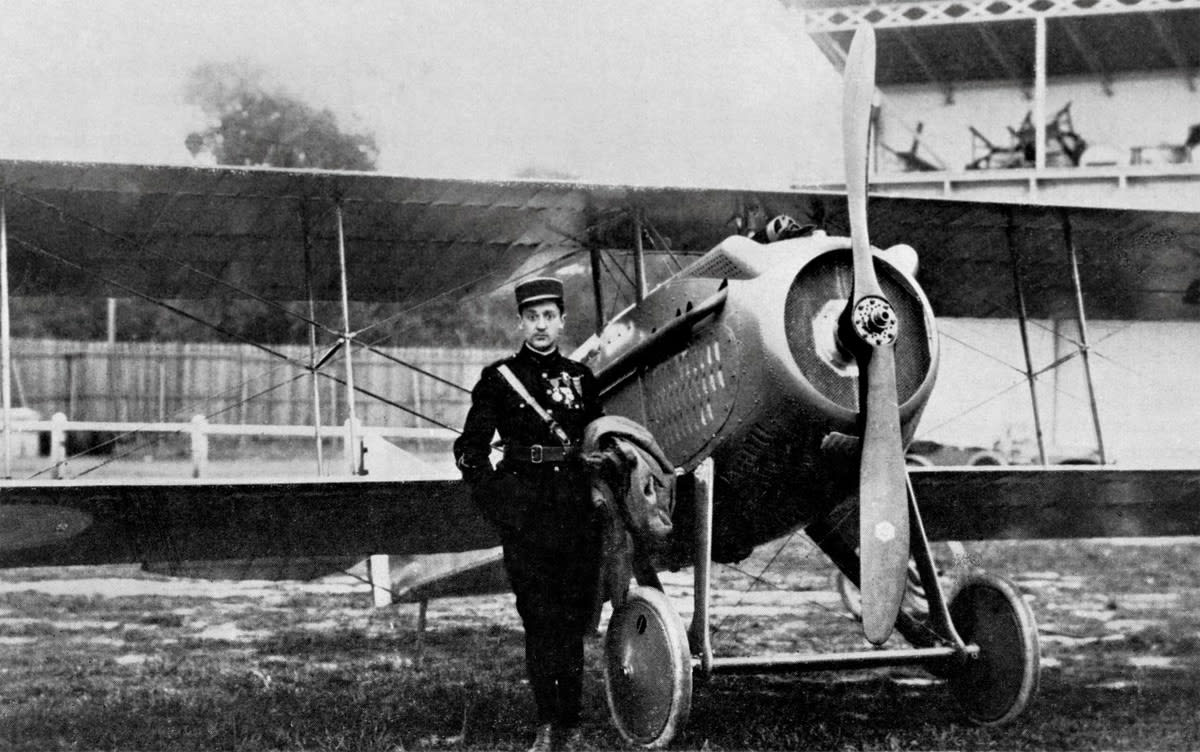 French ace Georges Guynemer in front of his Spad VII with an Éclair propeller.
French ace Georges Guynemer in front of his Spad VII with an Éclair propeller.
 Marcel Bloch, ca 1910
Marcel Bloch, ca 1910
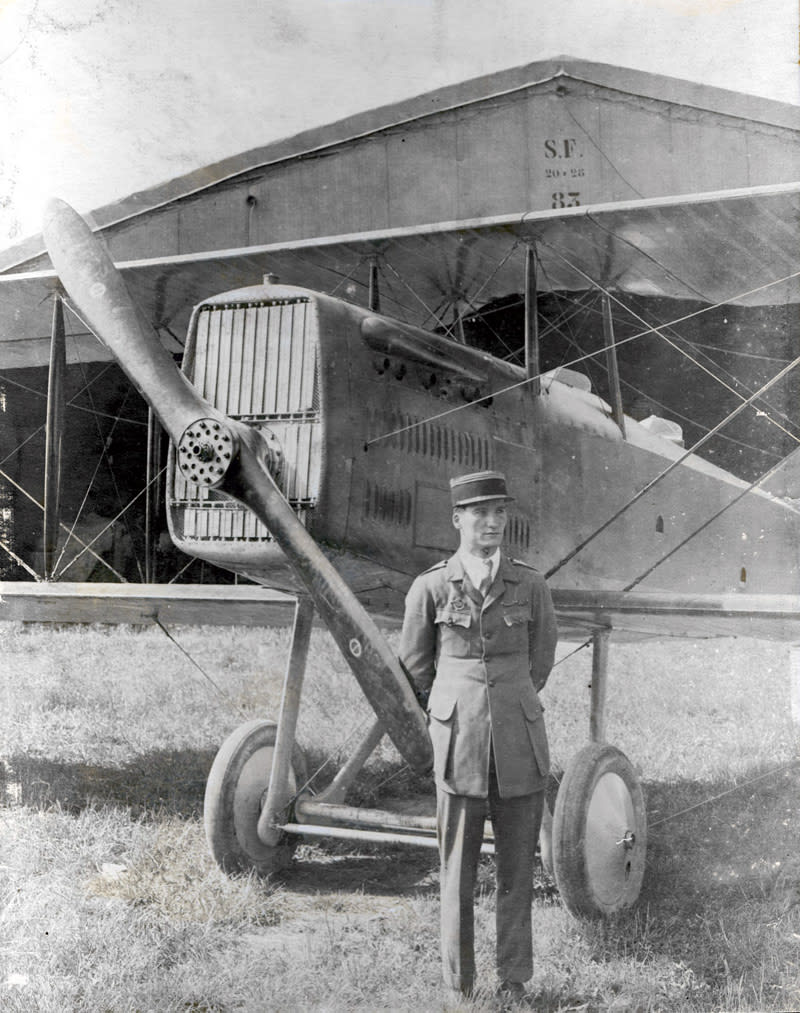 The SEA IV deployed by the 11th squadron.
The SEA IV deployed by the 11th squadron.
 The SEA IV deployed by the 11th squadron.
The SEA IV deployed by the 11th squadron.
 «The Indestructible»
«The Indestructible»
 The MB-152 was a rugged aircraft, offering a very stable firing platform and excellent damage
resistance.
The MB-152 was a rugged aircraft, offering a very stable firing platform and excellent damage
resistance.
 MB 60
MB 60
 Sheet metal workers building parts of a Bloch MB-152 fighter
at the SNCASO factory in Châteauroux-Déols.
Sheet metal workers building parts of a Bloch MB-152 fighter
at the SNCASO factory in Châteauroux-Déols.
 Marcel Bloch, his wife Madeleine, and sons Claude and Serge were first confined to the prison
at Fort Montluc in Lyon, then the Drancy concentration camp. Steadfastly refusing to collaborate
with the occupying force, Marcel was subsequently deported to Buchenwald, where he remained from
August 1944 to April 1945.
Marcel Bloch, his wife Madeleine, and sons Claude and Serge were first confined to the prison
at Fort Montluc in Lyon, then the Drancy concentration camp. Steadfastly refusing to collaborate
with the occupying force, Marcel was subsequently deported to Buchenwald, where he remained from
August 1944 to April 1945.


















 Europe Falcon Service.
Europe Falcon Service.
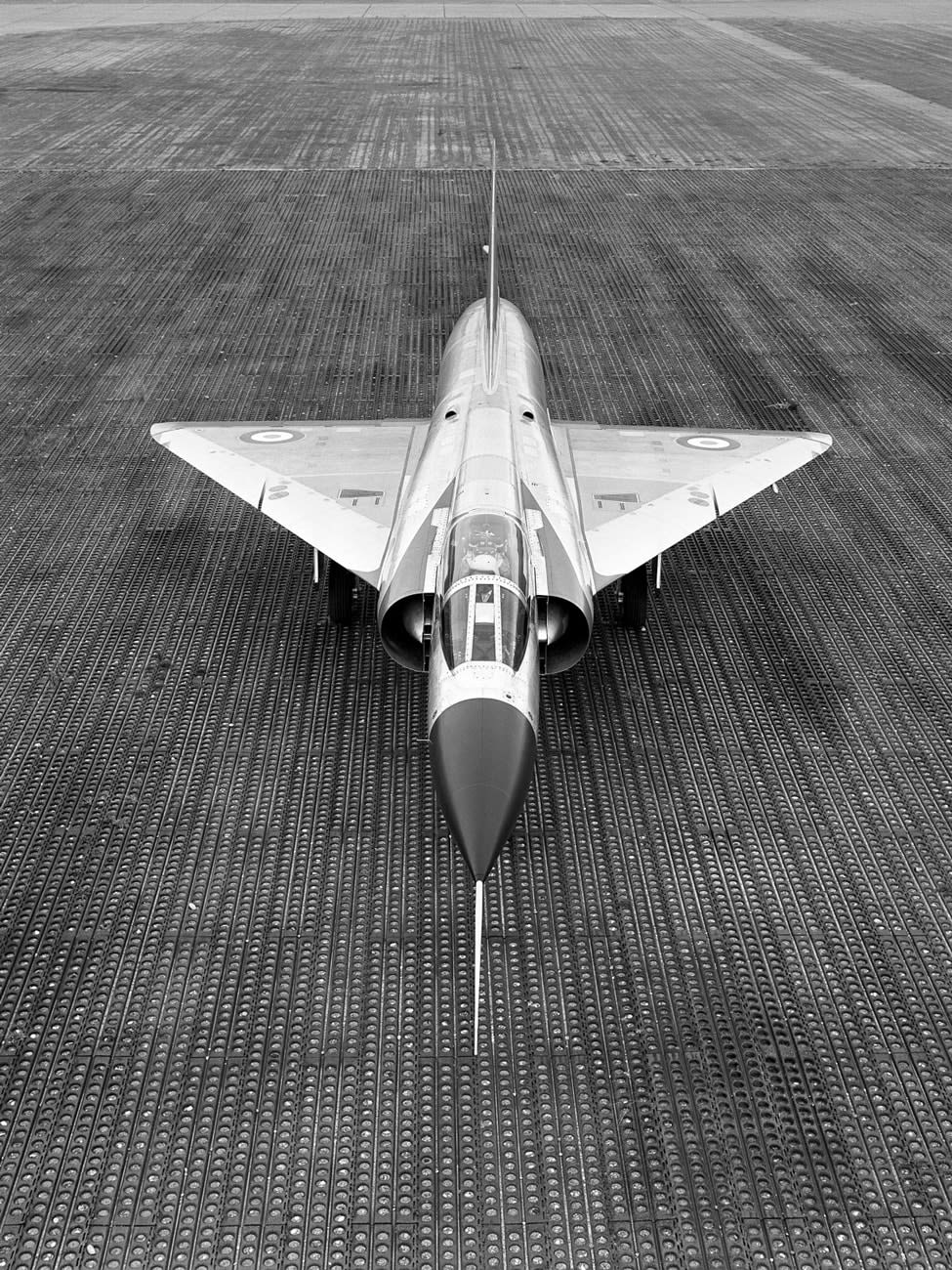 Mirage III.
Mirage III.
 Mystère 20 01 in flight.
Mystère 20 01 in flight.
 Mystère 20, Pan Am visit
Mystère 20, Pan Am visit
 Balzac v 001.
Balzac v 001.
 The production shop for the Étendard IV’s Aïda radar, in Saint-Cloud.
The production shop for the Étendard IV’s Aïda radar, in Saint-Cloud.
 Mirage G-8 01 and G-8 02.
Mirage G-8 01 and G-8 02.
 Hydraulic flight controls, the first to enter production in
France, were made at the Saint-Cloud plant. They would become one of the company’s key areas of
expertise and a critical aspect of Dassault’s renowned flight safety.
Hydraulic flight controls, the first to enter production in
France, were made at the Saint-Cloud plant. They would become one of the company’s key areas of
expertise and a critical aspect of Dassault’s renowned flight safety.
 Ecuadorian Mirage F1s.
Ecuadorian Mirage F1s.
 Mirage IV
Mirage IV
 Alpha Jet
Alpha Jet
 The Mirage III production line in Mérignac, near
Bordeaux.
The Mirage III production line in Mérignac, near
Bordeaux.
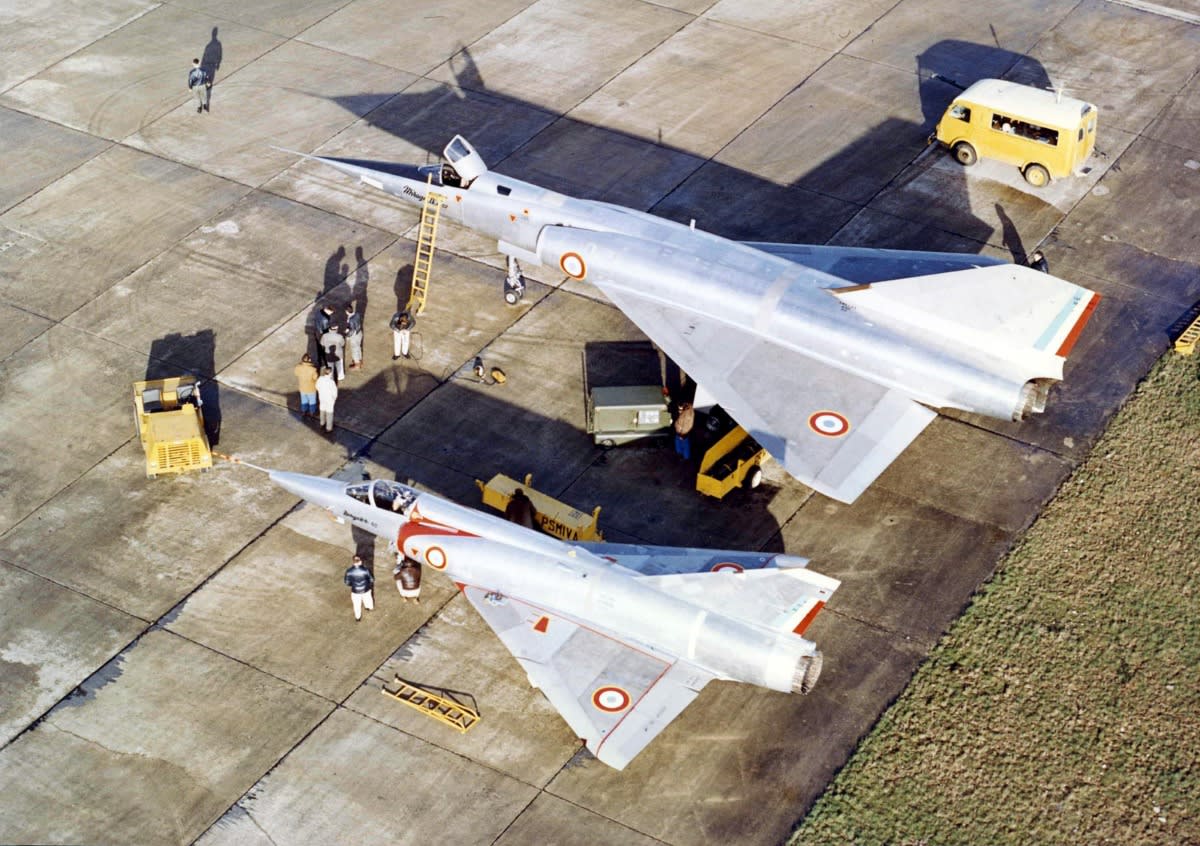 Mirage III and Mirage IV on the ground.
Mirage III and Mirage IV on the ground.
 Signing the contract for the sale of Mirage III fighters to Australia
Signing the contract for the sale of Mirage III fighters to Australia
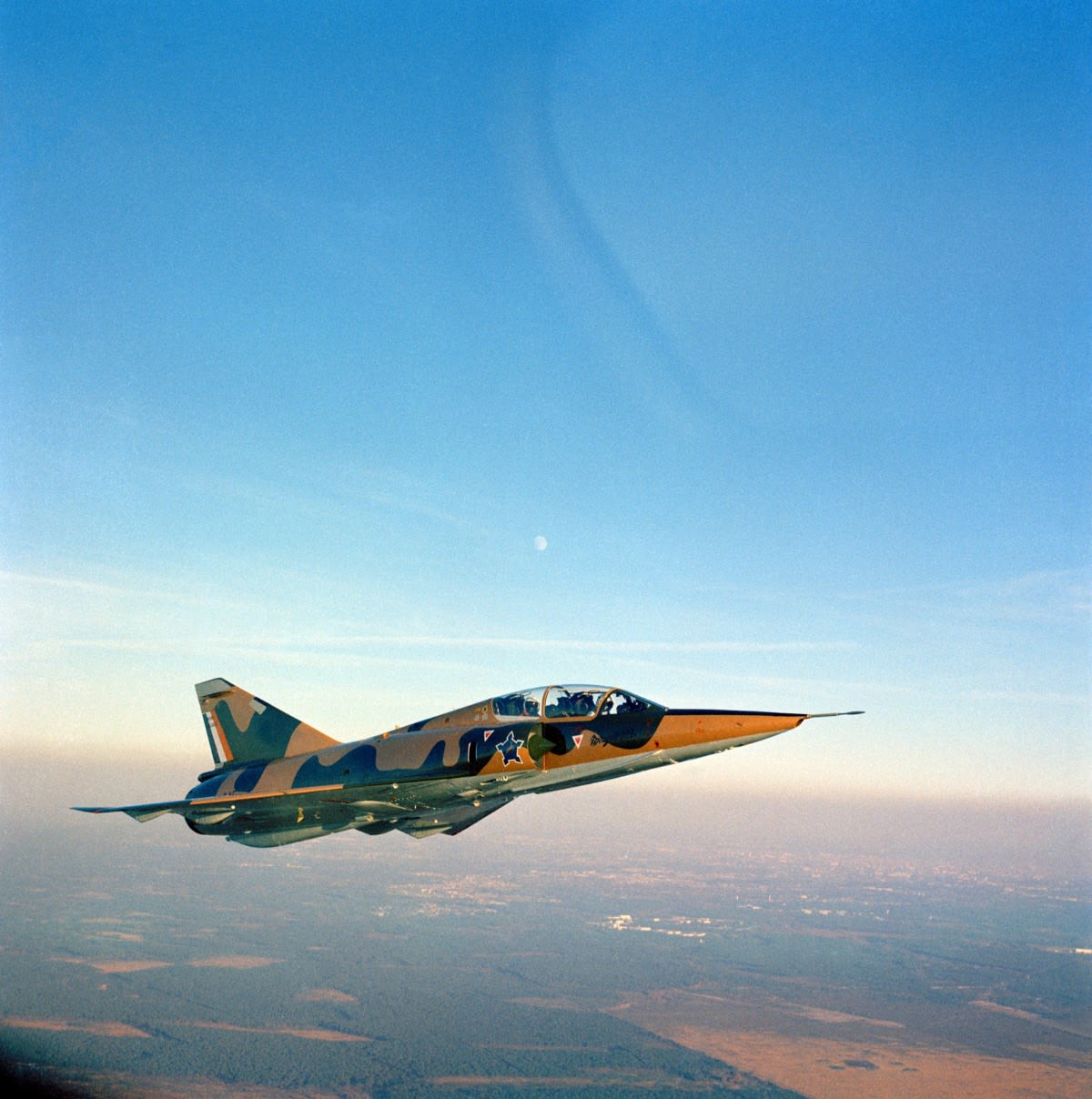 Mirage III D2Z.
Mirage III D2Z.













 Mirage 2000 flight simulator.
Mirage 2000 flight simulator.
 Marcel Dassault, 88, tries his hand at digital design, with the help of Dominique Calmels and
Francis Bernard, during the development of the Mirage 2000 in 1980.
Marcel Dassault, 88, tries his hand at digital design, with the help of Dominique Calmels and
Francis Bernard, during the development of the Mirage 2000 in 1980.
 The design department in the 1980s.
The design department in the 1980s.
 The design department after the turn of the 21st century.
The design department after the turn of the 21st century.
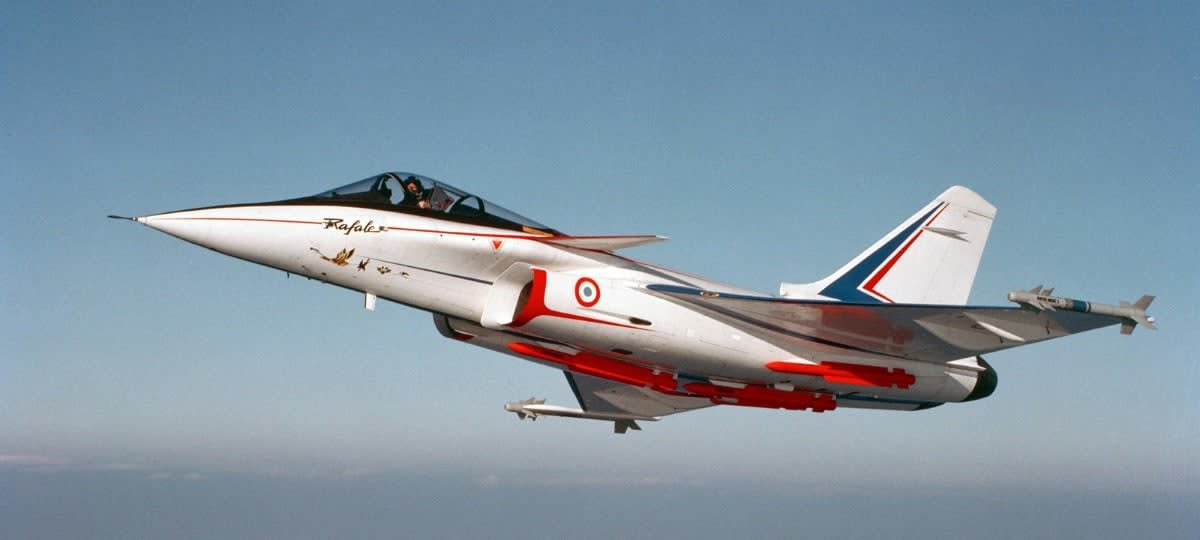 Rafale A
Rafale A
 Marcel Dassault passed away on April 17, 1986 at the age of 94.
Marcel Dassault passed away on April 17, 1986 at the age of 94.
 Falcon 900 01 in flight
Falcon 900 01 in flight
 Falcon Jet Corporation’s plant in Little Rock, Arkansas.
Falcon Jet Corporation’s plant in Little Rock, Arkansas.
 Robotized assembly of falcon wings in Martignas
Robotized assembly of falcon wings in Martignas
 The numerical control machine tools at the Seclin plant simultaneously produced parts for the
Mirage 2000. This drawing was part of a portfolio put together to show Falcon customers the
production facilities used to make their aircraft.
The numerical control machine tools at the Seclin plant simultaneously produced parts for the
Mirage 2000. This drawing was part of a portfolio put together to show Falcon customers the
production facilities used to make their aircraft.
































 The digital model is the design, production and support
standard for Dassault aircraft, used at every stage in the plane’s life.
The digital model is the design, production and support
standard for Dassault aircraft, used at every stage in the plane’s life.
 1st official roll-out of the Falcon 7X, February 15th, 2005.
1st official roll-out of the Falcon 7X, February 15th, 2005.
 The digital model is the design, production and support standard for Dassault aircraft, used
at every stage in the plane’s life.
The digital model is the design, production and support standard for Dassault aircraft, used
at every stage in the plane’s life.
 The nEUROn combat drone has shown remarkable performance,
confirming Dassault Aviation’s ability to manage an innovative joint European program, while keeping
costs under control and meeting deadlines.
The nEUROn combat drone has shown remarkable performance,
confirming Dassault Aviation’s ability to manage an innovative joint European program, while keeping
costs under control and meeting deadlines.
 Falcons are the most fuel-efficient premium business jets in the world.
Falcons are the most fuel-efficient premium business jets in the world.
 Rafale and Falcon 8X.
Rafale and Falcon 8X.
 The Rafale’s dispatch reliability, versatility and operational effectiveness are decisive
factors in its export success. This photo shows two Egyptian Rafales.
The Rafale’s dispatch reliability, versatility and operational effectiveness are decisive
factors in its export success. This photo shows two Egyptian Rafales.
 Vehra, a suborbital launch vehicle. For a number of years now,
Dassault Aviation has studied advanced space vehicles calling on its aeronautical expertise.
Vehra, a suborbital launch vehicle. For a number of years now,
Dassault Aviation has studied advanced space vehicles calling on its aeronautical expertise.
 Automated layup of a carbon fabric on a Rafale wing, at the Biarritz plant.
Automated layup of a carbon fabric on a Rafale wing, at the Biarritz plant.
 Dassault Falcon Service: Le Bourget.
Dassault Falcon Service: Le Bourget.
 Hololens Technology.
Hololens Technology.
 The Patrouille de France, Rafale and Falcon 8X.
The Patrouille de France, Rafale and Falcon 8X.